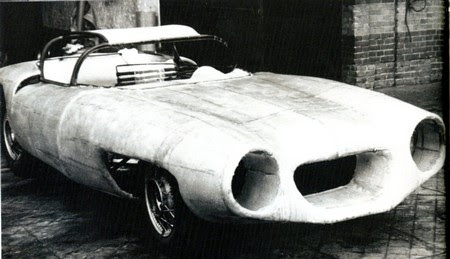1953 Simca by Colani
- Story Cars
- Nov 4, 2024
- 1 min read
In 1953, Simca commissioned Luigi Colani to develop a revolutionary sports car that would push the boundaries of automotive design. Colani, who was born in 1928 in Berlin, was not only an influential figure in aerodynamics but also an accomplished artist. After studying art, he turned his focus to aerodynamics, channeling his creative vision into the realm of automotive design.
The Simca prototype he crafted was remarkable for its innovative use of synthetic materials, making it one of the earliest European vehicles to feature an all-plastic body. This pioneering approach was indicative of Colani's belief that car design should transcend traditional boundaries, treating vehicles as sculptural works of art. The design of the Simca reflects this philosophy, incorporating sculptural forms alongside functional elements. For instance, the large headlight openings were ingeniously designed to also serve as air vents, marrying aesthetic appeal with practical functionality.
Colani's work on the Simca paralleled contemporaneous developments in the United States, particularly with the 1953 Chevrolet Corvette, which also experimented with plastic bodywork. However, the Simca stands out as a unique example of integrating advanced materials technology with a striking aesthetic vision. Colani’s design not only showcased his forward-thinking ideas but also set a precedent for future automotive designs, proving that cars could embody both beauty and innovation.
































